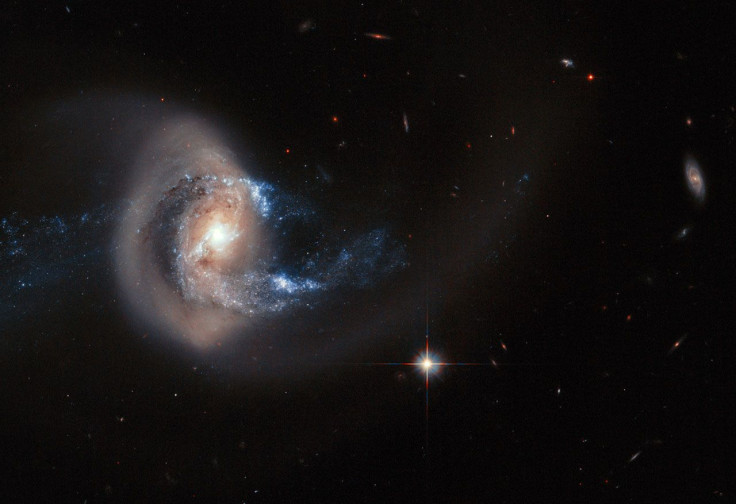Traces Of Galactic Collision And Merger Revealed In Hubble Photo
KEY POINTS
- ESA shared a photo taken by the Hubble Space Telescope
- The photo features a distorted spiral galaxy
- Traces of a galactic collision and merger are visible in the photo
The European Space Agency (ESA) recently shared a photo taken by the Hubble Space Telescope of a distant galaxy. According to the agency, traces of the galaxy’s violent past are visible in the photo.
The cosmic structure feature in the photo has been identified as the galaxy NGC 7714. It is located in the Pisces constellation and is about 100 million light-years from Earth’s neighborhood.
Like Milky Way, NGC 7714 is also classified as a spiral galaxy, which is characterized by its swirling spindly arms. Although NGC 7714 is technically a spiral galaxy, it looks very different from Milky Way due to its disfigured appearance.
As explained by the ESA, NGC 7714 was disfigured following a collision with a smaller neighboring galaxy known as NGC 7715. According to the agency, these two galaxies drifted close to one another millions of years ago.
As the galaxies collided into one another, the smaller NGC 7715 began to merge with NGC 7714, causing disruptions in the latter’s arms.
“The culprit is a smaller companion named NGC 7715, which lies just out of the frame of this image — but is visible in the wider-field DSS image,” ESA explained. “The two galaxies [1] drifted too close together between 100 and 200 million years ago, and began to drag at and disrupt one another’s structure and shape.”
The collision and merger created a new feature on NGC 7714, which is a tail-like structure extending into NGC 7715. This cosmic bridge serves as a funnel that delivers stellar materials from the smaller galaxy into its larger neighbor.
The influx of materials such as gas and dust led to a burst of new star formations within NGC 7714. According to the ESA, most of the newborn stars within the galaxy can be found near its bright central region.
“A ring and two long tails of stars have emerged from NGC 7714, creating a bridge between the two galaxies,” ESA stated. “This bridge acts as a pipeline, funneling material from NGC 7715 towards its larger companion and feeding bursts of star formation. Most of the star-forming activity is concentrated at the bright galactic center, although the whole galaxy is sparking new stars.”

© Copyright IBTimes 2024. All rights reserved.




















